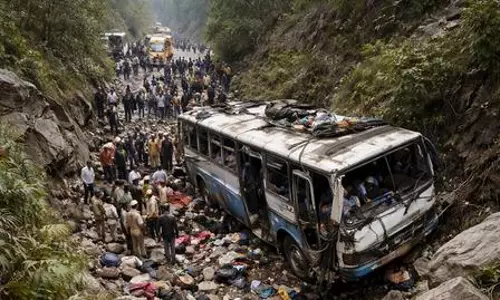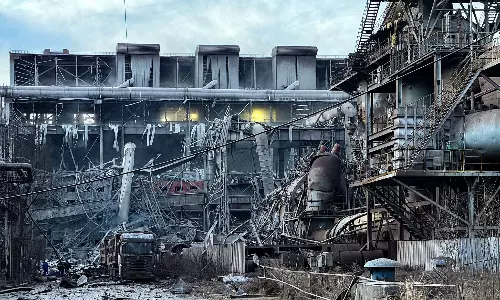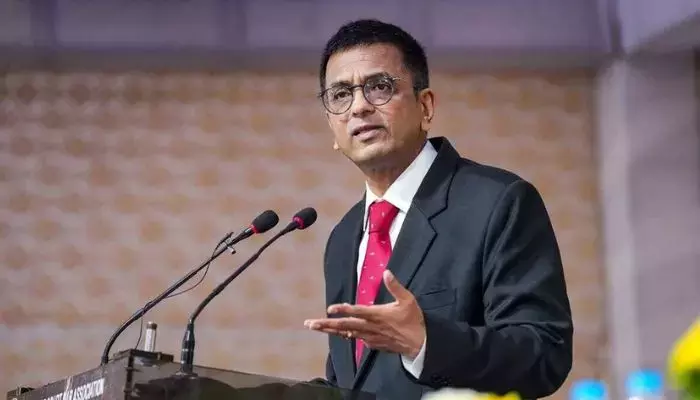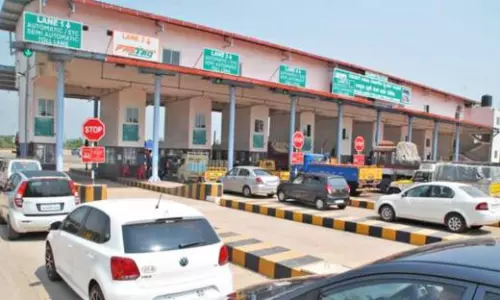
Effectiveness of the anti-Naxal drive
text_fieldsThe central government has decided to depute 4000 more soldiers to Chhattisgarh where Naxal hunting is at its peak. Union Home Minister Amit Shah, who recently visited the state, had stated that the left-wing extremist violence would end by next March. This is followed by the move to withdraw four battalions of CRPF with 1,000 men each from Jharkhand and Bihar, where the Naxal threat has subsided, and deploy them in Chhattisgarh. In addition to the 10 forward operating bases established this year, 100 new forward operating bases will be established in the Bastar region, where the Naxalites have an active presence. It is estimated that 153 Naxalites have been killed in Chhattisgarh so far this year. According to the report of the Home Ministry, 669 people were arrested and 656 people surrendered. 22 civilians and 10 security forces were killed.
Also read: Chhattisgarh encounter: 8 Naxalites, 1 security personnel killed
In the last 15 years, 2024 has been the year in which the highest number of Maoists have been killed in the country in encounters. In the first half of the year, the army killed 164 people. 90 percent of these were in Chhattisgarh. All the Naxalite strongholds like Gadchiroli and Gondia in Maharashtra and Khairagarh, Chhuikhadan, Gandai, Bijapur, and Sukma in Chhattisgarh have been decimated and brought under control through planned operations by the Special Task Force. The official confirmation is that Naxalite atrocities have been confined to 40,000 square feet of space in the Bastar region. By building roads and providing telephone connectivity, government projects have been able to reach even the most backward hinterlands like Abhujmad in the Kanker forest region, and bring them a little closer to the outside world. With the establishment of more bases and greater facilities for intelligence and rapid force engagements, troop movement to Maoist centres became easier. As part of countering the Naxalite menace, the Maharashtra government has recently passed a new bill recommending severe punishment for Maoists and their supporters. The governments of Chhattisgarh, Andhra, Telangana, and Odisha have already used the Public Security Act (PSA) for this purpose.
Also read: JNU students protests Kerala Story maker’s new movie on Naxals
Over the past half-century, the Centre and states have spent billions of rupees and military resources to tackle the phenomena known as Maoism and Naxalism, which the Congress-BJP-front governments alike saw as the country's biggest security threat spread over the states of Chhattisgarh, Jharkhand, Bihar, Odisha, Telangana, and Andhra. All this time, a two-pronged program of action was implemented, simultaneously with killing through military action and the development of public welfare activities among tribal tribal groups, which the Naxalites focused on. If one asks whether the reality on the ground lives up to the claims of project planning and their expression, the answer is unsatisfactory. Even according to the official version about the details of the Naxal menace, it is already time to have eradicated it. However, new counter projects are being announced repeatedly, with large funds being allocated for this purpose every year. Even in Kerala, where communist extremism is considered to have died down, and where mainstream communist parties are in power, the Maoist hunt is still being staged.
Also read: 3-layered security for over 600 polling booths in Naxal-hit Bastar
Efforts have been made in many states by non-governmental agencies and others to end this civil conflict but have not been sufficiently successful. The move from the government side was to subjugate those who took the path of confrontation with weapons. This also caused fatal losses to the tribal population of the region. The local support for the Naxalites, who gained influence in the inner villages and made their base there to fuel the war, have always been perplexing the government. It is to deal with it that the government has formulated various schemes in the tribal sector. Along with the fresh announcement of a tough-armed response to the insurgency, the Centre has also chalked out plans to expand commercial cultivation of gram in the Naxal-affected districts and tribal areas of Jharkhand and Chhattisgarh. Nine districts have been selected for this under the National Co-operative Consumers Federation. The Federation itself will procure the produce from the farmers by paying a higher support price. They are also free to sell on their own if they get higher than the support price. For more than half a century, various schemes have been announced and successive administrations have expressed confidence that they will solve the problem. The reason for the crisis is that things have remained on paper. It is this inaction that has allowed militants and others to gain strength, and the effectiveness of the anti-Naxal war depends on whether the Centre is willing to move away from that 'conventional approach'.
Also read: Maoist with Rs 11 lakh bounty surrenders in Maharashtra























